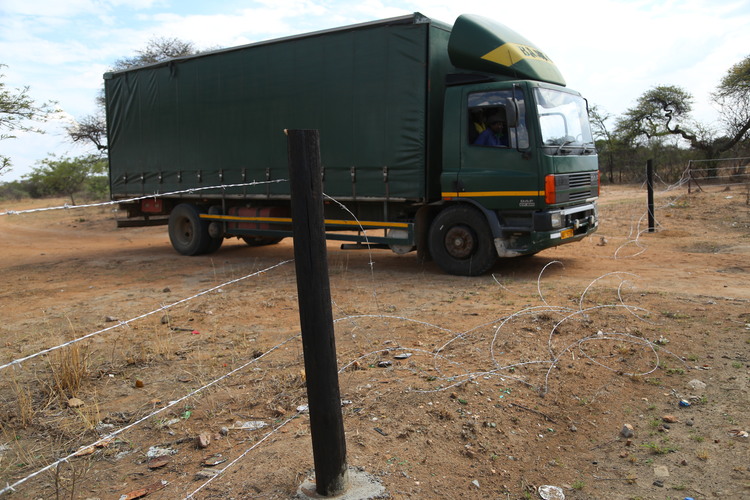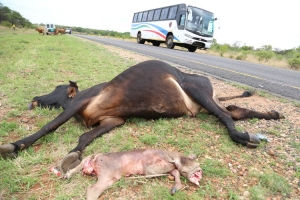
The Sunday Mail

Garikai Mazara —
The Plumtree-Mutare Highway was recently refurbished at a cost of staggering US$200 million, making it one of the most navigable roads in the country, and there is always that temptation to floor the accelerator pedal when one gets onto the new surface.
But hitting the pedal comes with its dangers, with the more common one along this highway — just like many others across the length and breadth of Zimbabwe — being the risk of driving a stray animal. Or a herd of them.

Whilst a number of such accidents go unnoticed by the public, it was with great shock that the country woke up one September morning to the shocking news of Apostle Charles Chiriseri’s death, after his vehicle hit a stray animal. He died on the spot.
Three years earlier, in April 2013, Air Commodore (Retired) Mike Karakadzai, who was the general manager of the National Railways of Zimbabwe, died when his vehicle hit a stray animal before swerving and hitting an oncoming vehicle.
He died that same April night at a Bulawayo hospital. Many others citizens, most of whom not prominent enough to warrant newspaper headlines, have lost their lives, vehicles or good health through these accidents.
Realising that lives are being lost along the recently resurfaced Plumtree-Mutare Highway — especially on the stretch between Gweru and Bulawayo — the Transport and Infrastructure Development Ministry, through the Traffic Safety Council of Zimbabwe, has embarked on a fencing exercise to the tune of nearly US$500 000 to keep animals off the road.
But this has not been without its fair share of challenges. Though an engineer with the Transport Ministry spoke at education and awareness campaigns with villagers before they embarked on the fencing, just a few days after they started, some sections had already been pulled down.
This vandalism of State property has been “justified” by villagers who argue that their interests have not been taken into account in the project.
One villager, who refused to speak on record, said the authorities had not left them gates, throughways or openings for movement of people, vehicles or animals from their homesteads and across the highway.
“Previously this area was owned by one farmer but after the land reform, several households now live along the highway and I think the authorities should have sat down with us and sought our opinions and inputs on where we need to access the highway. But they just fenced through, hence someone saw it fit to cut this part of the fence, to allow cars and people to pass,” he said.
However, the engineer, who also asked not to be named, said they engaged the villagers on awareness campaigns, educating them on the need to maintain, value and protect the fence.
“This is also one of the reasons why we engaged most of them in the fencing of the highway, so that they own it, that they get a sense of possession of the project. Though it has not been brought to our attention, I think it is very unfortunate that the villagers might have resorted to cutting the fence, instead of engaging us. They know where to go,” the engineer said.
Some people have suggested that rather than using commonly available galvanised barbed wire for the fencing, the Traffic Safety Council mark their material differently so that it is easily identifiable in the case of theft and vandalism.
Others have even suggested use of the type of security fence used for perimeter control at the Chiadzwa diamond fields, which is difficult to cut and easy to identify.
Another concern from motorists is that the fines imposed on those vandalising highway fences are not sufficiently punitive.
“Take for instance,” argued one motorist, “that the jail term for tampering with fixed telephone cables is nine years. Look at most of the telephone cables around, they are still standing, even though the service may not be available.
People know that they will be locked up for good if they are caught on the wrong side of the law. The same should happen with the highway fence because we are losing a lot of innocent lives when people cut the fence.”
Whilst the onus of looking after domestic animals is on the owner, usually when an accident happens, especially one where there is potential for compensation, it is always difficult to identify the owner of the animals, especially along the country’s main highways.
The State, through the Traffic Safety Council and its parent ministry, has taken on the responsibility of protecting both motorists and animals, at a cost of about half-a-million US dollars to the taxpayer in the initial phase of the project.
Funds permitting, the fencing will stretch the entire length of the Plumtree-Mutare Highway, a distance of about 800km.
Speaking to The Sunday Mail Extra last week, Mr Obio Chinyere, the MD of the Traffic Safety Council of Zimbabwe, said: “The Government remains committed to curbing vehicle-animal collisions. Its (Government) relentless efforts need to be complemented by drivers staying alert for stray animals and above all, the keeping of these animals in paddocks away from the highway by the farmers or owners. The communities around fenced sections of the road must be vigilant against any acts of vandalism of the perimeter fence.”
On the concerns raised by the villagers that they are not being engaged in deciding where to position throughways, Mr Chinyere said they would continue to talk to them so that such projects would be implemented in harmony with community perspectives.




